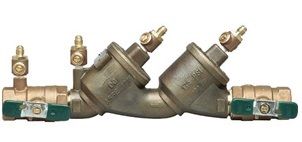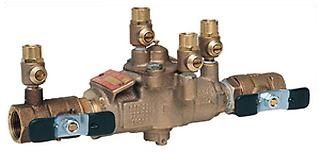Cross-Connection Control and Backflow Prevention
Access Cross-Connection Control Program Services
Are you already familiar with the Cross-Connection Control Program, or did you recently hear from us about accessing services online? Check out the Find or Become an Authorized Tester page to learn about:
- finding an authorized tester (for property owners)
- linking a property with your Halton 311 account (for property owners)
- uploading test results (for contractors)
- becoming an authorized tester (for contractors)
About the Cross-Connection Control Program
Do you worry about the quality of your drinking water? Are you aware of the steps that Halton Region has taken to ensure all residents have access to clean, safe drinking water?
Halton Region, in accordance with the Safe Drinking Water Act, introduced The Cross-Connection Control Program to protect the municipal water distribution system and prevent contamination from non-drinking water sources. It is the responsibility of all industrial, commercial and institutional (ICI), and multi-unit residential property owners (under By-law 71-19 the property owner includes occupants and tenants of the property) to do their part to install the proper water backflow prevention devices and have these tested annually by an accredited tester.
As part of this program, Halton Region:
- identifies cross-connections where potential contamination of drinking water may occur
- enforces the installation of backflow prevention devices
- maintains database of locations with backflow prevention devices installed
- ensures testing of installed devices on an annual basis
- ensures compliance of the Drinking Water System by-Law 71-19 (PDF file)
Backflow prevention devices
Installed at or near the water meter, backflow prevention devices allow water to flow in only one direction by preventing what is known as backflow. Backflow occurs when backsiphonage or back pressure conditions are created in a water line and cause water to flow in the opposite direction.
- Two internally loaded check valves, force-loaded or internally weighted.
- If one check valve fails to close the other will prevent backflow.
- Each check valve is fitted with a test cock for periodic testing.
- Can be used for all non-health hazard connections (i.e., fire sprinkler, irrigation systems).

- Two independently acting check valves separated by a reduced pressure zone.
- Installed between two shut off valves.
- Each check valve is fitted with a test cock for periodic testing.
- Used for health hazards and severely hazardous connections (i.e., hospitals, medical/dental facilities, industrial or chemical plants).

Program requirements and fees
No backflow prevention device
Existing backflow prevention device
Administrative Fee Payment Options
Questions and answers
- multi-unit residential (properties with two or more residential dwellings, not including secondary suites)
- industrial, commercial, and institutional buildings
- installed at entrances to buildings for new sprinkler services and on customer's side of the water meter for domestic services
- Moderate hazard: Any minor hazard connection with low probability of becoming a severe hazard.
- High or severe hazard: Any type of Cross-Connection involving substances considered dangerous to health.

